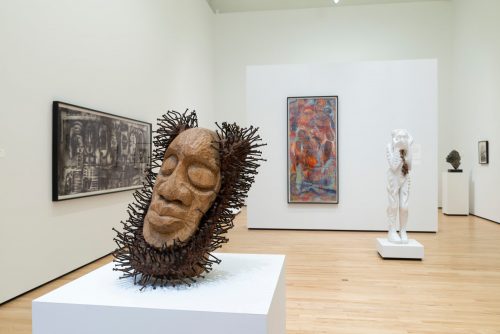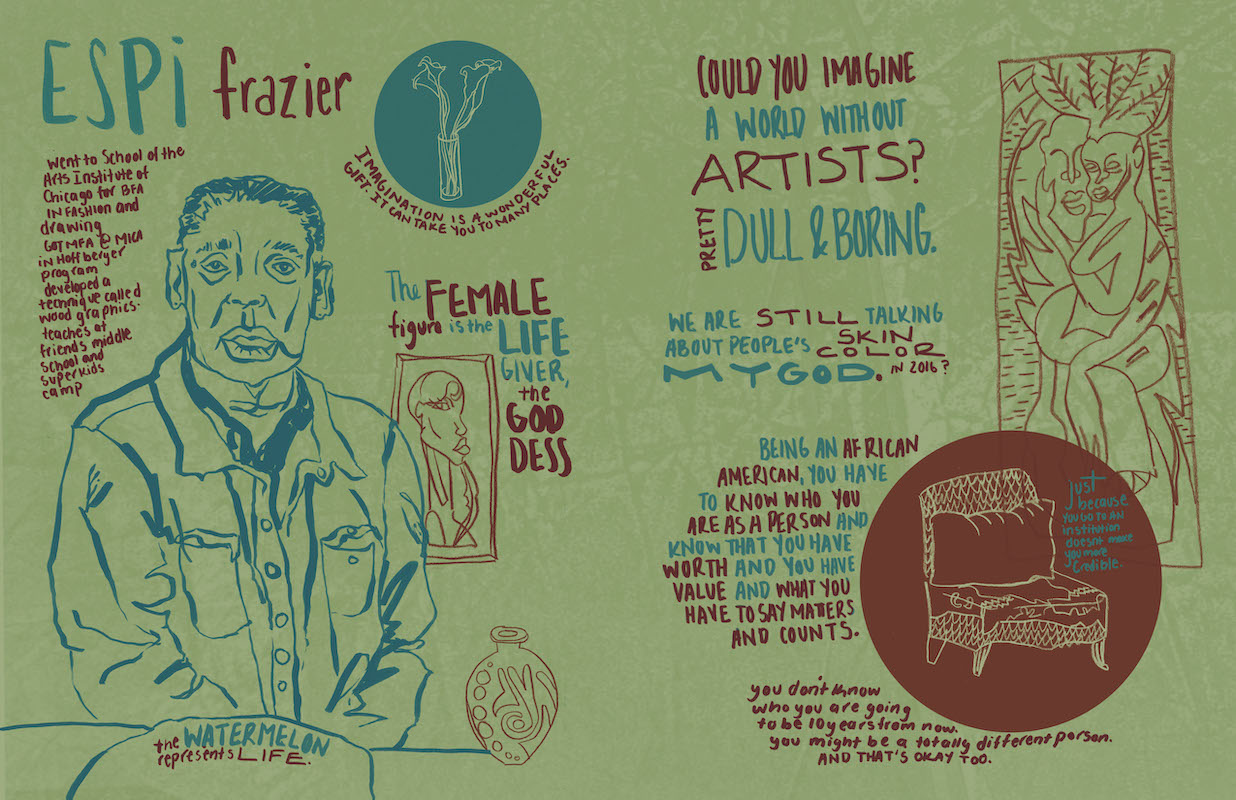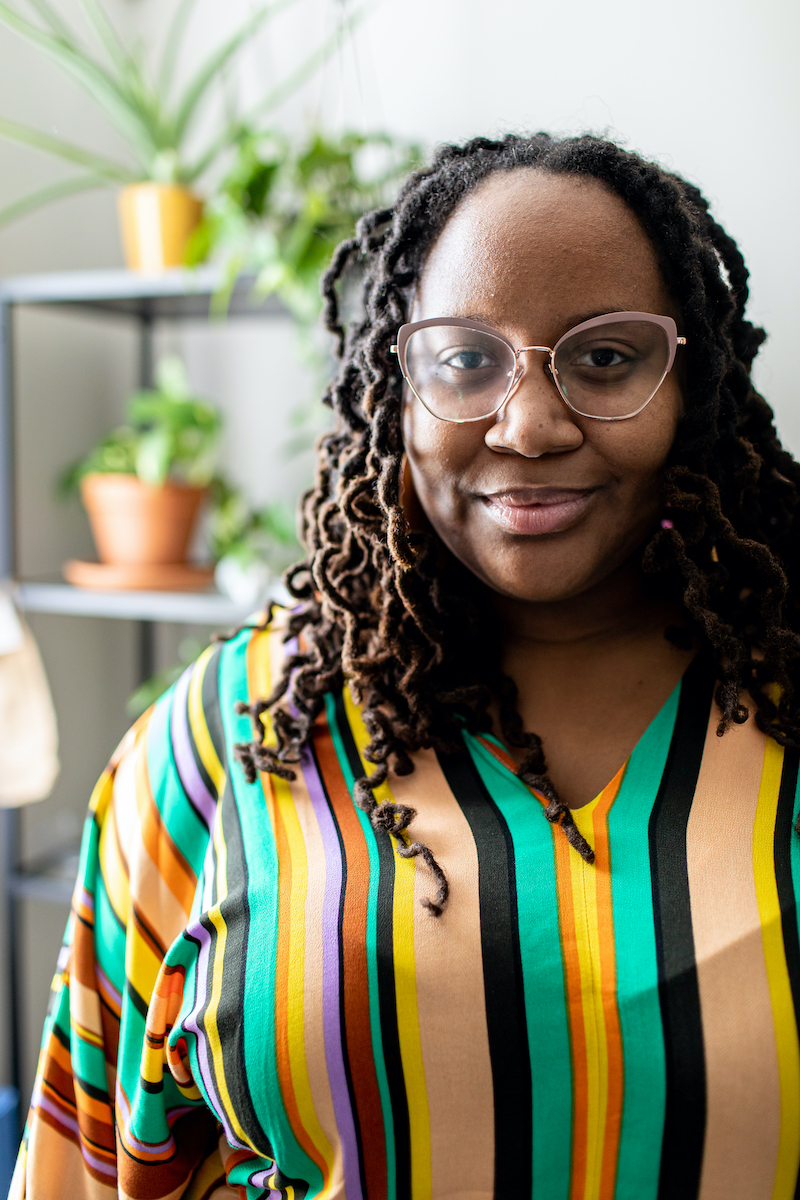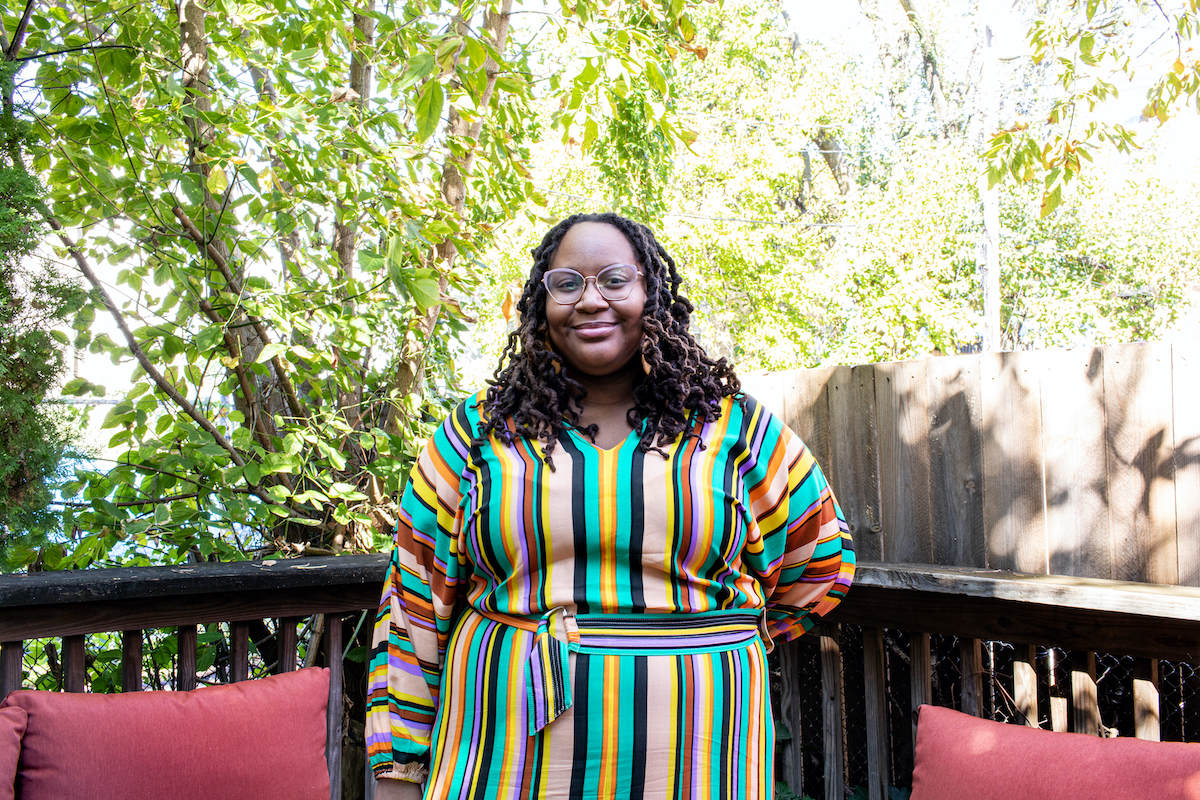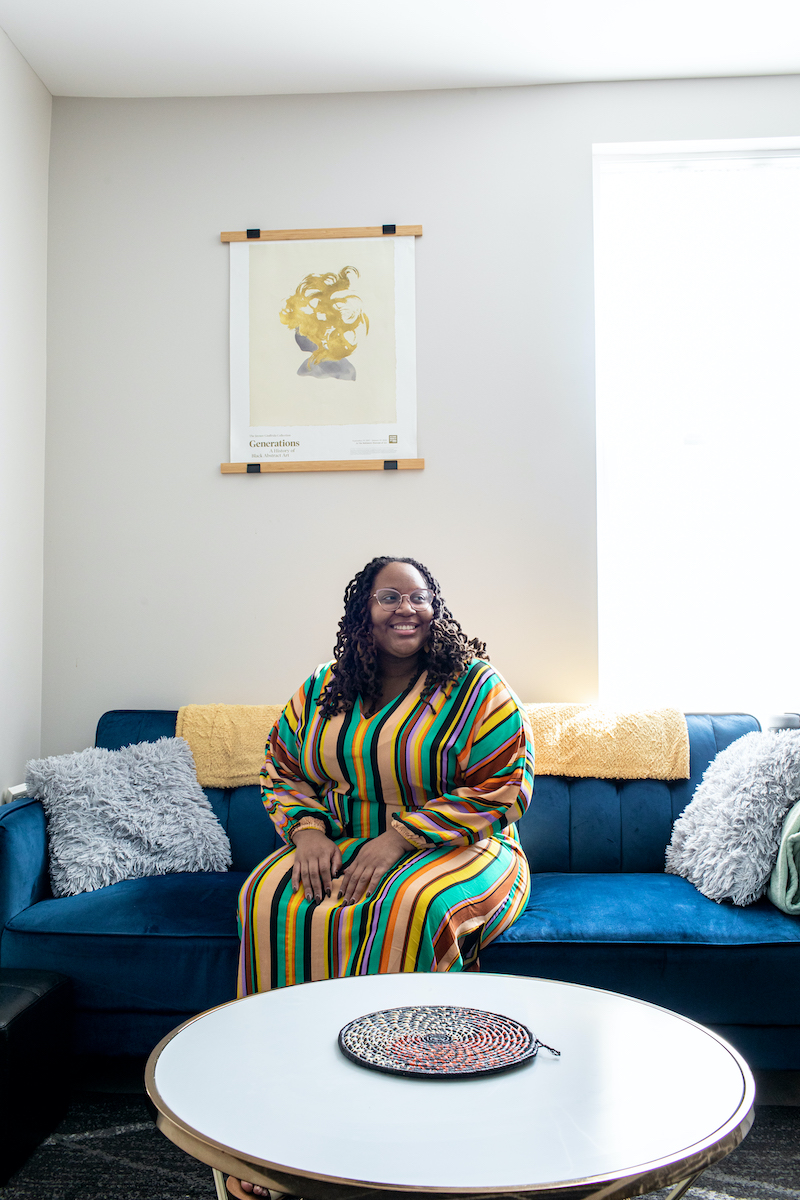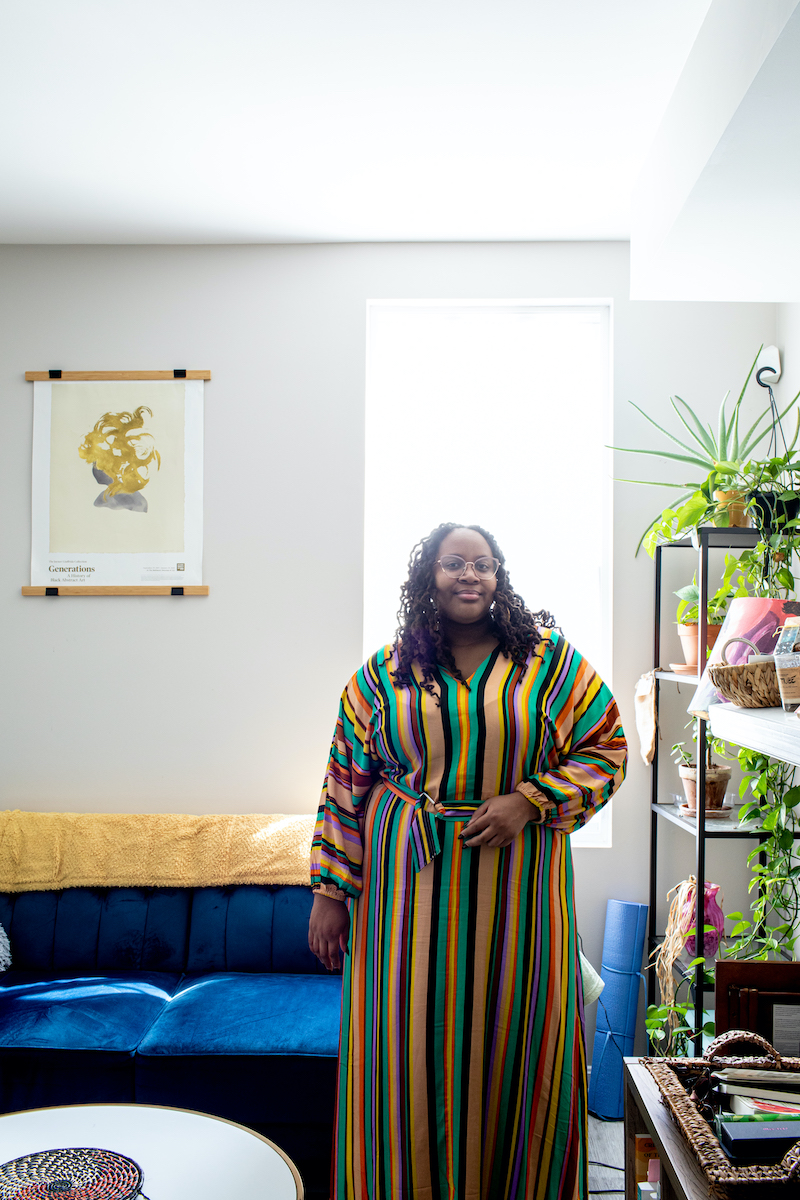Precious Blake is a visual journalist. In her drawings, which focus primarily on members of the Black artistic community of Baltimore, Blake uses illustration as a means to build an archive of voices that are often unheard elsewhere. Her drawings blend layers of vibrant markers with handwritten text, alternating between her own hand and her narrator’s language. It’s important for her to meet her subjects where they are most comfortable, visiting them at home and in cafés (when it’s not COVID times) because, as Blake explains, “I’m as much an environmental artist as a portrait artist because I believe that the things that we hold on to and the places we frequent tell just as much about who we are.”
As an Illustration major with a Printmaking minor at MICA, Blake decided to embark on a thesis project that involved going out into the Baltimore art world and interviewing people of color about their mixed experiences. The resulting book, Creatives of Color, chronicles Blake’s interviews with curator Michelle Gomez, MICA President Samuel Hoi, First Lady of Maryland Yumi Hogan, and author D. Watkins, among many others. The drawings were made in a few hours each and were left imperfect because Blake focuses on her connection with her sitter and tells herself, “I’m just going to trust my hand to do what it wants to do while I’m having this conversation and not have to go back with a fine-tooth comb to make it perfect.”
This thesis project led Blake to develop her current project, Celestial Beings, which focuses on telling the stories and sharing the creative spiritual practices of five Baltimore-based Black femme artists. Blake explains that she was drawn to create this work because she was struggling with her own spirituality and was wondering, “Are there any Black women who are also struggling with their spirituality or maybe have found answers that work for them? I want to be your friend,” she says. Because of this, Celestial Beings has become both a research project of sorts and a collaboration between herself and her narrators whom Blake secured funding to be able to pay for contributing their own artwork to the project’s resulting zine and community healing events. Blake believes that the pandemic actually created a silver lining for this project (which began in 2019) because now the project includes a website that has visuals as well as audio and recorded video clips that showcase the breadth of the practices of these five femmes, who are not all visual artists.
In addition to her creative work, Blake has a full-time desk job. She is the Program Director for Visual Arts in Education for the Maryland State Arts Council, a job she loves fiercely and feels excited by every day. She works primarily with Teaching Artists, growing the roster of artists who teach through the granting program she helps oversee and building arts communities throughout the state in schools, senior homes, and nonprofit spaces. Working through COVID, she is proud of the work the Teaching Artists have continued to do, adapting to the challenges of online learning to continue to serve their respective communities throughout Maryland. It’s meant more work for her in some ways, but Blake is happy to do it. “I don’t mind being a broken record if it means the person who needs it gets the information, especially since the overall stance that I’ve always had is we want to support you as a whole person, as an entrepreneur, as an artist,” Blake says. Maryland’s artists are lucky to have her.
Over Zoom, Blake and I talked about spirituality, how surprisingly large Maryland actually is, and how an art practice is chiefly an investigation into the personal questions we find daunting.
SUBJECT: Precious Blake, 26
WEARING: Yellow, green, and orange multi-striped dress, sandals, pink eyeglasses, yellow wooden earrings
PLACE: Zoom
